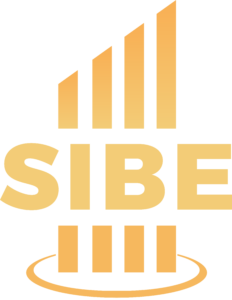In a market where competition is very fierce and consumer preferences keep changing, avoiding market research is one of the biggest and most expensive business mistakes any entrepreneur can make. But, quite unfortunately, it is also one of the repeated mistakes we see entrepreneurs and small business owners make, especially in this part of the world, Africa.
We’ve worked with several business owners who were so excited about getting their business idea off the ground or their product in the market that they didn’t stop to think for a second if there was an existing market or if they would get enough customers for their business or product.
And the result was either not enough sales to sustain the business or not being able to stand out in a competitive market. In short, most of them were complete disasters that needed to be salvaged.
Now, that is a situation you wouldn’t want to find yourself in. Not after investing resources and time into starting a new business or creating a new product. Hence the need to conduct thorough market research to figure out the feasibility of your idea before dedicating any more time to it.
So how does one conduct market research in Africa to ensure your idea is off to a good start?
Well, in this guide, we tell you about it. Stick around for the next 7–10 minutes and you will learn all about how to conduct market research.
What is market research?
Market research is a process that helps you gather information about the dynamics of the market and your potential customers or clients. It comprises both qualitative and quantitative approaches, with qualitative research delving into the nuances of consumer behaviour and motivations, while quantitative research provides numerical data for statistical analysis.
When you conduct market research, it helps you define your target market, craft realistic customer personas, and validate how viable your business idea is. At the end of this process, you should be able to answer common questions like:
- Who are your ideal customers?
- What are their preferences when it comes to shopping for products like yours?
- Where can you find them? Is it online, at shopping malls or both?
- What pain points do they have that you can help them solve?
- Are there enough people like that in the market?
By learning more about your ideal customers, their pain points, and their desires, you can build your business or product to better suit them. After all, they are the reason why you are introducing your product or service and they are the ones who will be patronizing you.
Why is it important to conduct market research?
Your customers are the driving force behind your business. Without them, there is no business. This means that you have to get to know them to understand them.
When you understand your customers, you get to know:
- How you can solve their problems or make their lives a little bit easier
- How you can craft a marketing message that resonates and attracts the right kind of audience
- Whether they will be willing to patronise you and for how much.
Now, if you skip market research, you won’t know these things, and you will make decisions based on assumptions. Since there is usually more to a person or something than meets the eye, these assumptions could be entirely wrong, which will negatively affect your business.
Market research also helps you to:
- Know more about the market in general
- Expand on your business idea to see if you can make it an even better one
- Understand your competitors so you can make informed decisions about your pricing, the quality of your product or service, and possible gaps you can fill.
- Adapt customer-centric approaches that enhance the overall experience of your customers
- Reduce the risk of coming up with a product or service that only a few people need.
Gathering data about your customers and the market generally helps you better serve your customers and ensures consistent growth for your business. Otherwise, you base your decisions on assumptions, which is a dangerous path to tread on.
What to consider before conducting market research
Market research is undoubtedly time-consuming. It can even feel like you are wasting your time, especially if you don’t make enough preparations before you start, but trust us when we say it isn’t a waste of time.
With the right preparation, you can gain the insights you need and make the most of your efforts. Here are a few things to consider.
Your objectives
Purpose has a place in everything we do. Without it, it’s mostly a wasted effort. So ask yourself, Why am I doing this? What insights do I want?
Your objective for conducting market research should have a specific result that you are bent on achieving for your business. Without a purpose or an objective in mind, you wouldn’t know where to look or what data you were supposed to collate.
An example of an objective could be to talk with your potential customers if they will be willing to buy a particular product or service and at what price.
The research methods to use
You may not have everything figured out about the process before you start but one thing that should be clear is the research methods you will be adopting.
Knowing this helps you create a timeline for the process and what specific actions you should take at what times. Surveys, interviews, focus groups, and observational research are just a few of the many methods available for your research.

Tools and resources for the research
If you know the research methods you will use to gather the data and insights needed, then you can research tools and resources that will help simplify the process. Fortunately, there are so many business tools out there that can be very helpful.
Tools for conducting interviews, creating surveys, or observing customer traits.
Can you afford to outsource?
One of the major reasons why many people avoid market research is it’s a time-consuming factor but there is a way around it. If you are extremely busy and can’t dedicate any time to this, you can outsource to firms like ours to lend a helping hand.
How to conduct market research
Just like in business, there is no one-size-fits-all or one approach to market research. Every business will have a different approach to market research but what’s important is the data and how you will use it.
However, the most important steps to take and the things to consider remain the same for every business. Here are the core steps to take to get the most out of your efforts:
1. Start by having clear objectives
Just as we stated earlier, the purpose of the research is important and directs you on how you can gather the insights needed to meet your objectives. What are you hoping to achieve through your market research? Whether it’s identifying new market opportunities, understanding customer preferences, or evaluating the effectiveness of marketing campaigns, clearly defining your objectives gives you a sense of direction throughout the research process.
2. Identifying your target market
Every successful business has a deep understanding of its ideal customers. So can you describe your ideal customer? Who are the type of people you want to walk into your store or reach out to you online to buy a product from you or engage your services? These are the people you should be aiming to know better. They are your target market.
It’s possible to have several target markets but it’s recommended that you keep your list to a maximum of three so you can gather accurate data.
Now each of your target markets should have common demographic traits like:
- Gender
- Age
- Location
- Social status, etc.
These common traits might also be psychographic. For example, people who have similar interests or people with common goals. They could also be people with certain job titles or be operating in certain industries.
By defining your ideal customer profile and conducting thorough demographic and psychographic research, you can gain invaluable insights into who your customers are, what they need, and how best to serve them.
Understanding your target audience is also the key to crafting products, services, and marketing messages that resonate with them on a personal level.

3. Find out how big the market is
You may have defined your target market but the next question is are there enough potential customers to sustain your business and that of your competitors? If your research answers no to this question, then you need to consider changing the product or the service.
If there is an existing market that is big and established with lots of competitors then you need to conduct industry research or competitor research to gain insights into industry data and find out what you can do differently with your product or service to stand out from the competition.
4. Talk to your target market
Now this might just be the most important step in the entire process—getting in front of your potential customers and asking them questions. You need to talk to people and hear their stories, their struggles, desires, pain points, etc.
Learn everything you can about your ideal customers and the most effective way is through first-hand accounts. Either in person or through online interviews. The truth is many people don’t like talking to strangers so it’s likely your competitors skipped this step and this is where you can put miles between you and your competitors.
Use this step to shape your business model and to develop products or craft offerings that your potential customers will be willing to buy.
5. Analyze your competitors
You cannot pretend your competitors don’t exist because they do. And they influence your business, directly or indirectly.
Your competitor’s products and services are what your potential customers already use as a solution to the problem you intend to solve. Hence you need to study them and analyse who they are, what exactly they do, and how they respond to customer needs.
By doing this, you identify the gaps in their offerings and how you can make yours better to stand out and attract more customers. Whether it is to provide cheaper alternatives or to improve the quality of their products.
6. Interpret your findings
Once you are done collecting the data, the real work begins—analyzing and interpreting the findings.
Look for patterns, trends, and insights that emerge from the data, and use them to inform your strategic decisions. What do the findings tell you about your market, your customers, and your competitors?
By drawing meaningful conclusions from your analysis, you can develop products, services and marketing strategies that are grounded in data and insights.
How to conduct market research—conclusion
Market research happens to be the cornerstone of an effective business strategy. By understanding your target market, you can avoid the costly business mistakes that most business owners make when starting a business in Africa.
It should be noted that market research isn’t only necessary when planning on starting a business, but it is equally important throughout the stages of your business. Launching a new product or trying to scale your business also requires effective market research.
Need help to start? Request a call!





